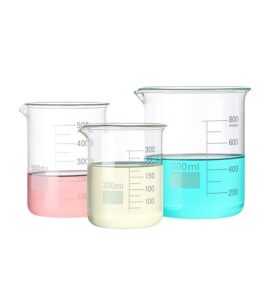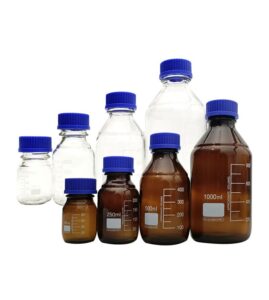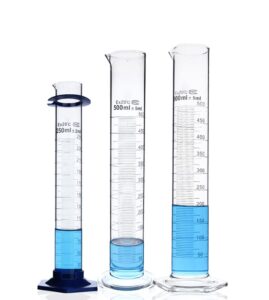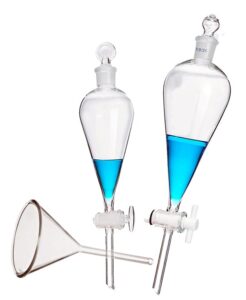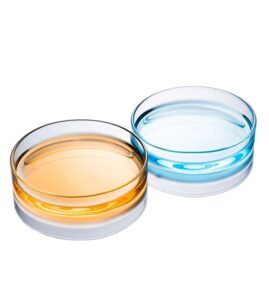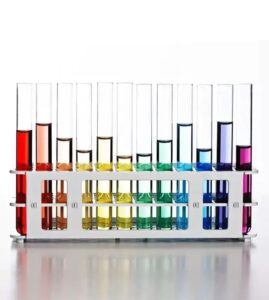Ever wondered what all those intriguingly shaped glass containers in a science laboratory are? Curious to know why there are so many variations and what they’re used for? Well, sit back, and let’s embark on an explorative journey into the world of laboratory flasks!
Laboratory flasks, integral components of any laboratory setup, are vessels designed for containing, measuring, and mixing different chemicals. These flasks come in various shapes and sizes, each serving a unique purpose, from the classic Erlenmeyer to the intricate Schlenk.
Ready to delve deeper? Hold on tight because we are about to embark on a scientific adventure!
Why are Laboratory Flasks Important?
Laboratory flasks are indispensable in the scientific field. They provide a safe and convenient way to carry out experiments, control reactions, measure substances, and culture organisms. Without these flasks, many of the scientific advancements we enjoy today would not be possible.
What are the Different Types of Laboratory Flasks?
Different types of laboratory flasks cater to a wide range of applications in scientific and clinical laboratories. From conducting chemical reactions to storing and measuring liquids, flasks play a pivotal role in various laboratory procedures.
Erlenmeyer Flask
The Erlenmeyer flask, also known as a conical flask, is one of the most common types of laboratory flasks. The flask has a conical body and a cylindrical neck, making it ideal for swirling mixtures without spilling.
Volumetric Flask
A volumetric flask is used for making precise measurements of liquid volumes. It is recognizable by its bulbous body and long, narrow neck. A line known as the graduation mark denotes the volume that the flask is designed to hold. More about volumetric flasks here.
Florence Flask
Named after the city of Florence, Italy, this flask features a round body and a long neck. Its round body provides a larger surface area for heating, making it perfect for boiling liquids.
Can One Flask Replace the Other?
While some of the functions of these flasks may seem interchangeable, their specific designs serve particular purposes. For instance, the conical shape of the Erlenmeyer flask prevents the loss of liquid during stirring, making it better for this purpose than the round-bottomed Florence flask.
Are There More Types of Laboratory Flasks?
Indeed, the fascinating world of laboratory flasks doesn’t end here. There are more specialized types of flasks used for distinct laboratory applications.
Round-Bottom Flask
The round-bottom flask, as the name suggests, has a round bottom. This shape allows for even heating of the liquid inside, making it ideal for conducting chemical reactions.
Retort Flask
A retort flask has a spherical body and a long, downward-pointing neck. This distinctive shape is suitable for distillation processes.
Schlenk Flask
The Schlenk flask is a unique piece of laboratory equipment. It has a sidearm fitted with a stopcock, allowing the vessel to be filled with gases or evacuated. It’s specifically designed for handling air-sensitive compounds.
Büchner Flask
The Büchner flask, named after its inventor Ernst Büchner, is a flat-bottomed flask. It’s typically used in vacuum filtration procedures alongside a Büchner funnel.
Dewar Flask
The Dewar flask, also known as a vacuum flask, is designed for the storage of extremely cold liquids such as liquid nitrogen or helium. Its double-walled construction with a vacuum in between prevents heat transfer, maintaining the temperature of its contents.
Kjeldahl Flask
The Kjeldahl flask, named after the scientist Johan Kjeldahl, has a long neck and a bulbous body. It’s used in the Kjeldahl method for determining the nitrogen content in a sample.
Culture Flask
Culture flasks are used in microbiology for the cultivation of microbial cultures. They have a flat base and often come with a vented cap to allow air exchange.
How are Laboratory Flasks Made?
Most laboratory flasks are made of borosilicate glass, known for its excellent heat resistance and chemical inertness. The process of creating laboratory glassware involves glassblowing, a technique that requires high skill and precision. You can learn more about the process here.
What to Consider When Choosing a Laboratory Flask?
Choosing the right laboratory flask depends on the purpose of the experiment. Each flask has been designed with specific applications in mind. Here’s a brief guide to help you make the right choice:
Erlenmeyer Flask
Choose an Erlenmeyer flask if you need to swirl, heat, or store solutions. Its conical shape and flat bottom make it stable and easy to use.
Volumetric Flask
The volumetric flask is your go-to for precise volume measurements. It is not meant for reactions or heating but is perfect for preparing standard solutions.
Florence Flask
If you need to heat or boil liquids evenly, the Florence flask is your best option. Its round body allows for uniform heat distribution.
Round-Bottom Flask
The round-bottom flask is suitable for reactions, especially under heating or vacuum. The round bottom allows for even heat distribution and easy stirring.
Büchner Flask
The Büchner flask is ideal for vacuum filtration. Its flat bottom and side-arm design make it perfect for this purpose.
Frequently Asked Questions about Laboratory Flasks
In this section, we will explore some frequently asked questions about laboratory flasks.
Can I heat a flask on an open flame?
Certain types of flasks, like the Florence flask and round-bottom flask, are designed to be heated. However, you should never heat a flask that is not designed for it, such as a volumetric flask. Always use a heat-resistant mat or wire gauze between the flask and the flame.
Can I freeze a laboratory flask?
Most laboratory flasks, especially those made of borosilicate glass, can withstand low temperatures. However, sudden temperature changes can cause the glass to crack, so it is recommended to cool the flask gradually. Also, not all flasks are designed to be sealed tightly, which might be necessary for certain freezing applications.
Can I reuse a flask for a different experiment?
Yes, you can reuse a flask for a different experiment, but it must be cleaned thoroughly to avoid cross-contamination. For sensitive experiments, you might need to sterilize the flask.
How can I measure the volume of a liquid in a flask?
Flasks like the volumetric flask are designed for precise volume measurements and come with graduation marks. However, other flasks like the Erlenmeyer or Florence flask are not meant for accurate volume measurements. For these, a graduated cylinder would be more appropriate.
Can I use a laboratory flask for cooking?
While laboratory flasks are made of heat-resistant glass, they are not designed for cooking and should not be used in place of culinary utensils. Residues from previous experiments or the chemical treatment of the glass could make it unsafe for food preparation.
A Final Word on Laboratory Flasks
Laboratory flasks may seem like simple vessels, but they hold the power to enable scientific discovery. Their variety speaks volumes about the diversity and intricacies of scientific work. Each type of flask, with its specific design, has a unique role in making science possible, from nurturing cell cultures to enabling precise chemical reactions.
In the realm of scientific exploration, the humble laboratory flask stands as a silent but significant partner, containing within its glass walls the potential for human knowledge to grow. By understanding these simple tools, we gain insight into the intricate world of scientific research, fostering our appreciation for the wonders of discovery.


